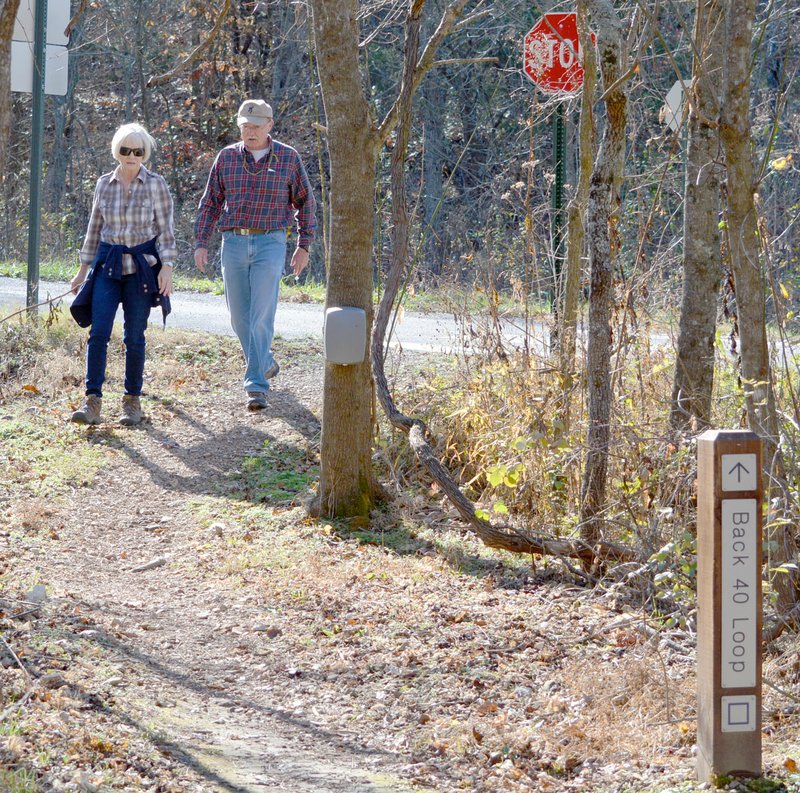A handful of gray plastic boxes have shown up throughout the Back 40, each emitting a beam of light to count people wandering through the winding, hilly trails.
Trails coordinator Kay Curry said the seven Eco-Counter boxes have been in place since July, and she's getting monthly data from them -- including the number of users and when they're actually on the trails.
"It's kind of a really powerful tool," she said. "It lets us see for that whole period at that location how many people have been through."
This information, she said, tells the city what sections are getting the most traffic and when people are using it. Weekends, she said, tend to see heavier traffic, with more people heading out in the late morning and early afternoon after sleeping in. By contrast, she said, weekdays see less traffic, typically concentrated later in the day when people are getting out of work.
For example, there's a significant amount of traffic near Dorking Lane, she said, typically earlier in the day. That counter picked up an average of 55 trail users each day in October and was typically busiest on Saturdays, with its busiest day, Oct. 29, showing 146 people passing through. This is near the Blowing Springs entrance to the main Back 40 loop, she said, and the counts concentrating earlier in the day suggest it's where many trail users start.
The information can help officials see where maintenance needs to be concentrated, she said, as well as what sections and features are popular. That can help in planning trail building for the future. Additionally, she said, there are several projects, like new benches and water fountains, that need to be placed where they will likely see the most use.
Knowing what sections are less popular can help show where changes may need to be made. Some trails, she said, may be too challenging for the typical hiker or rider, while others may lack interesting features and benefit from the more technical terrain.
Curry said she suspects many trail users are staying on the loop to avoid getting lost. But right now, she said, there aren't enough counters to discern which direction people are heading. More counters, she said, could provide more precise data.
There are numerous options for how data is pulled, she explained. The information can be isolated to a single day or to omit a day, which can show the difference in use caused by an event on the trail system.
Right now, she said, the counters are still fairly new, meaning there isn't a strong baseline on the data. But within several months, she said, trends will be able to be found and analyzed.
Additionally, she said, the counters and the data they provide can help secure more funding for the trails by showing they are providing a benefit to the people of Bella Vista.
Among those counted by these sensors were Bill and Cathy Berry, who recently moved to Bella Vista from Texas.
They visited the area several times before making the move, Bill Berry said. Cathy Berry said that seems to be the case for most of the other Bella Vistans they've met.
Both said they enjoy having these trails.
They go hiking weekly, Bill Berry said, and it's something they look forward to all week. They always go to a different section, he said, and intend to have walked the whole trail network before long.
"It's a real benefit to the people who live here and the people who come to visit," he said.
General News on 11/22/2017
